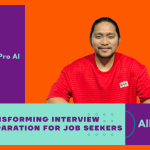Quick Take
While the SaaS market is oversaturated due to AI and no-code tools, those who focus on innovation, user needs, and delivering real value still have a path to success.
In recent discussions across SaaS and startup communities, many founders have expressed concern about the state of Software as a Service (SaaS) in an era dominated by AI and no-code tools. Two notable posts highlight the challenges faced by modern SaaS creators: oversaturation, lack of innovation, and a declining market appetite for basic products.
The Oversaturation Dilemma
The accessibility of AI and no-code platforms has led to a flood of SaaS products, many offering minimal value beyond wrapping basic functionalities of OpenAI or similar APIs. Founders lament that creating SaaS is no longer about solving meaningful problems but about racing to market with features that can be replicated in days. As one post describes, “It’s not about the quantity of SaaS offerings; it’s the quality that’s missing.”
This saturation is not just a technical problem but a marketing one. Potential customers are inundated with cold emails and promotional campaigns, leaving legitimate, high-value SaaS solutions struggling to stand out.
Why Traditional SaaS is Struggling
Several themes emerge from these discussions:
1. Lower Barriers, Higher Competition: The democratization of tools like ChatGPT has reduced barriers to entry, but this has also diluted innovation. Products that once required months of development can now be built in weeks, leading to an influx of mediocre offerings.
2. Erosion of Differentiation: Without unique value propositions, many SaaS products compete solely on price or minor features. This is unsustainable in a market flooded with open-source or low-cost alternatives.
3. Cold Outreach Fatigue: Excessive email marketing has soured customer perceptions of SaaS, making it harder for even the most innovative solutions to gain traction.
The Path Forward for SaaS
Despite these challenges, there’s still hope for founders willing to adapt. Several commenters offer strategies for standing out:
• Focus on Real Value: Success lies in creating solutions that solve high-priority problems for specific niches. As one commenter put it, “Build what customers want, not what you know how to build.” Understanding pain points through direct engagement with potential users is critical.
• Leverage AI Beyond Wrappers: Instead of simple integrations, founders should explore AI’s potential to drive deeper functionality. For example, task automation or domain-specific intelligence can offer distinct advantages.
• Exceptional User Experience: With so many products available, design and usability have become non-negotiable. A seamless interface and excellent support can differentiate even a technically simple product.
• Community Building: As one commenter shared, personal outreach—meeting potential customers at coworking spaces, meetups, or through professional networks—can validate ideas and establish trust more effectively than digital campaigns alone.
Conclusion
SaaS isn’t dead, but it’s evolving. The age of quick wins with simple tools is over, replaced by a demand for thoughtful, impactful solutions. For founders, this means doubling down on innovation, listening to real user needs, and delivering unparalleled value. The market may be crowded, but those who rise above the noise will continue to thrive.
In a saturated landscape, the bar is higher than ever—but so is the opportunity for those willing to aim for it.


